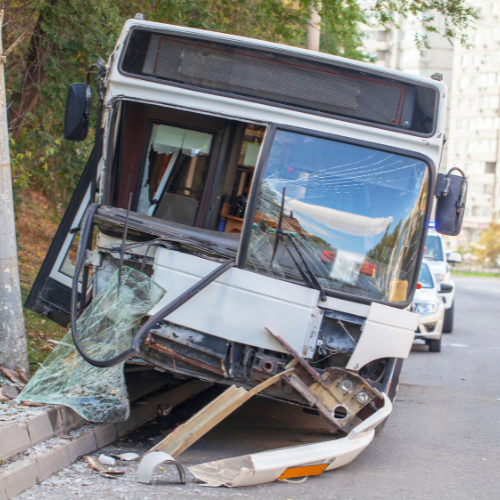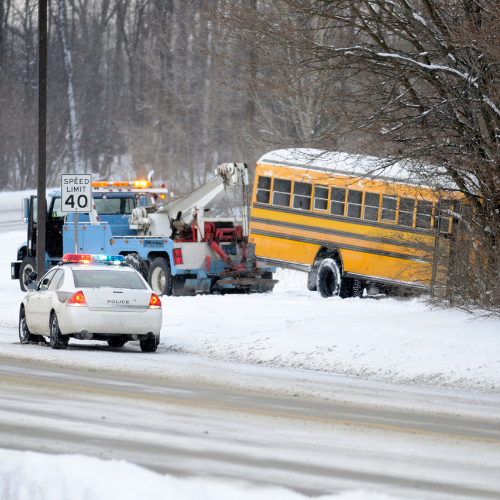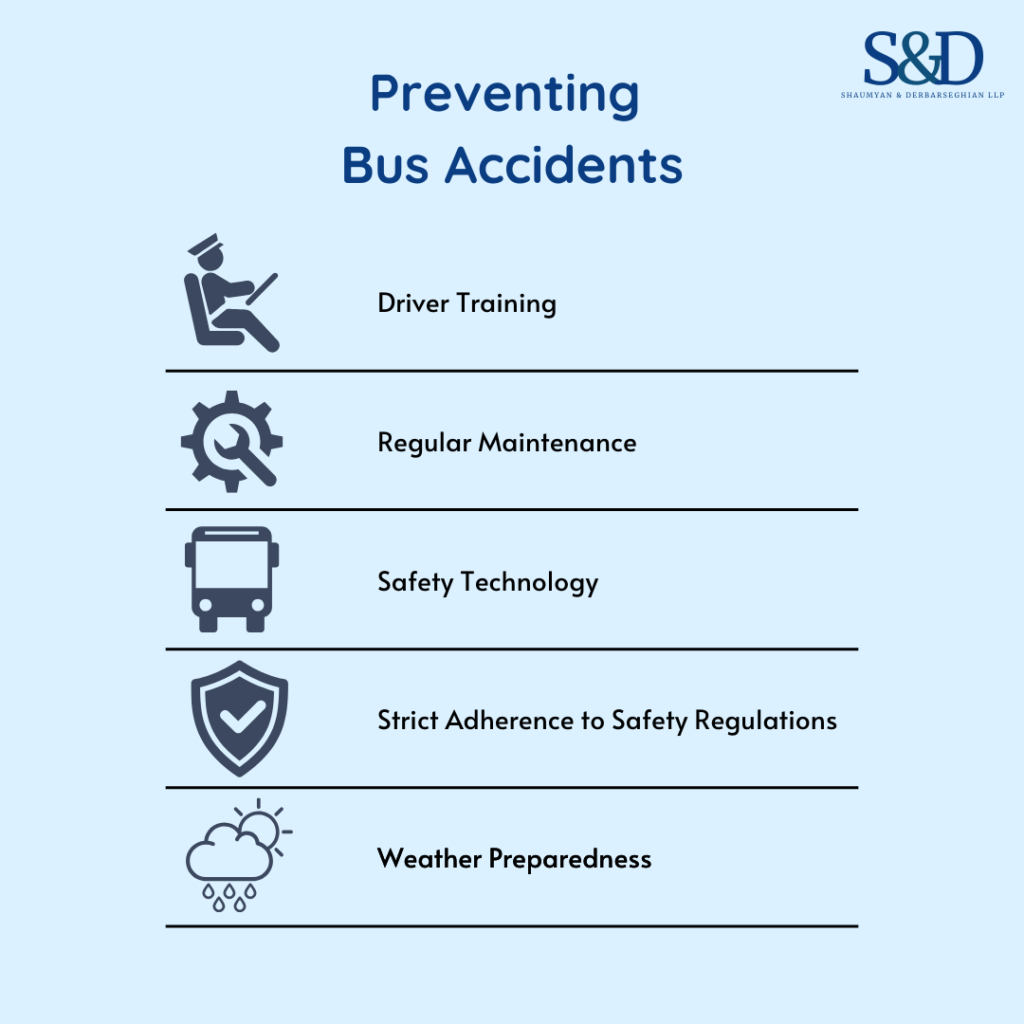Bus Accident Lawyer Los Angeles

Los Angeles Bus Accident Lawyers
Looking for a Los Angeles bus accident lawyer? At Shaumyan & Derbarseghian LLP, we recognize the devastating consequences that bus accidents can have on victims and their families. Contact us today if you or a loved one has been involved in a bus accident. Our experienced personal injury attorneys are here to help you seek justice and the compensation you deserve.
Why Choose Shaumyan & Derbarseghian LLP
- Extensive Experience
- Personalized Attention
- Aggressive Advocacy
- Compassion and Support
Understanding Bus Accidents
While generally considered a safe mode of transportation, bus accidents can still cause devastating injuries. This page provides a comprehensive guide to bus accidents. Let’s discuss the common causes, different accident types, potential injuries, prevention methods, and the steps you should take to recover.
Common Causes of Bus Accidents
Driver Negligence
Bus drivers have a responsibility to operate the vehicle safely. Negligence can manifest in several ways:
- Distracted Driving: Texting, using a phone, eating, or any activity that diverts attention from the road significantly increases the risk of an accident.
- Drowsy Driving: Fatigue can impair judgment and reaction time, just like driving under the influence. Bus drivers are required to adhere to strict rest regulations, but violations can occur.
- Driving Under the Influence: Driving a bus while intoxicated by alcohol or drugs is a serious offense with heavy consequences.
- Speeding: Exceeding the speed limit or driving too fast for road conditions can lead to a loss of control, especially on curves or slippery roads.
- Failing to Yield Right of Way: Disregarding traffic signals, stop signs, or failing to yield to pedestrians can cause collisions.
- Making Unsafe Lane Changes: Sudden or reckless lane changes without proper signaling can lead to accidents with other vehicles.
Mechanical Failure
- Brake Failure: Faulty brakes can render a bus unable to stop safely, leading to rear-end collisions or difficulty navigating traffic.
- Tire Blowouts: A tire blowout can cause the bus to veer off course or lose control, especially at high speeds.
- Steering Malfunctions: A malfunctioning steering system can make it difficult or impossible for the driver to control the direction of the bus.
- Faulty Door Mechanisms: Malfunctioning doors can lead to passenger falls while entering or exiting the bus.
Improper Bus Maintenance
Bus companies are legally obligated to maintain their vehicles regularly to prevent breakdowns and ensure passenger safety. Neglecting proper maintenance can lead to mechanical failures and accidents.
Poor Road Conditions
Uneven pavement, potholes, large cracks, or other road hazards can contribute to bus accidents.
Inclement Weather
Heavy rain, snow, fog, or black ice can create hazardous driving conditions and significantly reduce visibility. Bus drivers should adjust their speed and driving behavior accordingly.
Types of Bus Accidents
Bus accidents can vary depending on the circumstances of the incident. Here are some of the most common types of bus accidents:
Rollover Accidents: These occur when the bus tips over onto its side, often caused by sharp turns at high speeds. Rollover accidents can cause severe injuries due to the potential for passengers to be thrown around inside the bus.
Head-On Collisions: These devastating accidents happen when a bus collides head-on with another vehicle traveling in the opposite direction. Head-on collisions often result in serious injuries or fatalities due to the immense force involved.
Rear-End Collisions: These occur when a bus crashes into the back of another vehicle that has slowed down or stopped suddenly. Rear-end accidents can still cause whiplash, neck injuries, and back problems for passengers on the bus.
Side-Impact Collisions (T-Bone Accidents): These happen when a bus is struck by another vehicle at a perpendicular angle, typically at intersections. The severity of injuries in T-bone accidents can vary depending on the size and speed of the vehicles involved.

Common Bus Accident Injuries
The force of a bus accident can cause a wide range of injuries, depending on the severity of the accident, the type of accident, and how passengers are thrown around inside the bus. Here’s a breakdown of common injuries:
Whiplash: The sudden jolt or jerking motion that often occurs in bus accidents can cause whiplash, a painful neck injury characterized by muscle strain, headaches, and dizziness.
Broken Bones: The impact of a collision or being thrown from your seat can cause fractures in various bones, including the arms, legs, ribs, spine, and facial bones.
Head Injuries: Head injuries are a serious concern in bus accidents, ranging from mild concussions to life-threatening traumatic brain injuries (TBIs). Symptoms of a concussion can include headaches, dizziness, nausea, memory problems, and difficulty concentrating. TBIs can cause more severe symptoms like coma, bleeding in the brain, and permanent neurological damage.
Spinal Cord Injuries: These devastating injuries can occur when the spinal cord is compressed or severed in an accident. Spinal cord injuries can cause partial or complete paralysis, loss of sensation, and permanent disability.
Soft Tissue Injuries: Cuts, bruises, sprains, and strains are also common in bus accidents, especially for passengers who are thrown around or hit by debris. Soft tissue injuries can be painful and may take time to heal completely.

For more information on bus safety, visit the National Highway Traffic Safety Administration (NHTSA) website.
Preventing Bus Accidents
- Driver Training: Ensuring that bus drivers receive thorough training on safe driving practices, defensive driving techniques, and handling adverse weather conditions can reduce the risk of accidents.
- Regular Maintenance: Bus companies must prioritize routine maintenance and inspections to identify and address mechanical issues promptly. Properly maintained buses are less likely to experience breakdowns that could lead to accidents.
- Safety Technology: Equipping buses with advanced safety features, such as collision avoidance systems, backup cameras, and blind-spot monitoring, can enhance driver awareness and reduce the likelihood of accidents.
- Strict Adherence to Safety Regulations: Both bus drivers and transportation companies must adhere to federal and state safety regulations, including hours-of-service limits, to prevent driver fatigue and ensure passenger safety.
- Weather Preparedness: Bus drivers should be trained to handle adverse weather conditions safely, including reducing speed, increasing following distance, and using appropriate tire chains or winter tires.
What to Do After a Bus Accident
If you are involved in a bus accident, it’s crucial to take the following steps to protect your health, safety, and legal rights:
Seek Medical Attention: Even if you don’t feel immediate pain, adrenaline can mask injuries. Get checked out by a doctor as soon as possible to rule out any underlying injuries or internal bleeding.
Report the Accident: Report the accident to the bus driver and the police. The police will create an accident report that will be important for insurance purposes and potential legal claims.
Gather Evidence: If you are able, take pictures of the scene of the accident, the damage to the bus and any other vehicles involved, and your injuries. Pictures can serve as valuable evidence later on.
Collect Witness Information: If possible, get the names and contact information of any witnesses to the accident. Witness testimony can be helpful in reconstructing the events of the accident and determining fault.
Do Not Speak to the Insurance Company: The insurance company for the bus company or another involved party may try to contact you shortly after the accident. Do not speak to them about the accident or your injuries without first consulting with an attorney. They may try to get you to say something that could jeopardize your claim.
Contact a Bus Accident Lawyer: A qualified bus accident lawyer can help you understand your legal rights, investigate the cause of the accident, fight for the compensation you deserve for your medical bills, lost wages, pain and suffering, and other damages. An attorney can also handle complex legal matters and communications with the insurance company on your behalf.
Contact a Los Angeles Bus Accident Lawyer
Bus accidents can result in significant financial burdens, including medical bills, lost wages, rehabilitation costs, and long-term care. If your accident was caused by someone else’s negligence, such as a bus driver’s error, a mechanical failure due to improper maintenance, or unsafe road conditions, you may be entitled to compensation for your damages.
A bus accident lawyer can help you navigate the complex legal process of filing a claim against the responsible party. They will investigate the accident, gather evidence, negotiate with the insurance company, and represent you in court if necessary.
Free Consultation
You don’t have to navigate the complexities of a bus accident case alone. Shaumyan & Derbarseghian LLP is here to provide compassionate and experienced legal representation. Let us fight for the justice and compensation you deserve, so you can focus on healing and rebuilding your life after a bus accident. Your well-being is our priority, and we are committed to helping you secure the compensation needed to move forward with your life while actively promoting bus safety within our community. Contact us today to schedule your free consultation, during which we will assess the details of your case, explain your rights, and discuss the legal options available to you.

